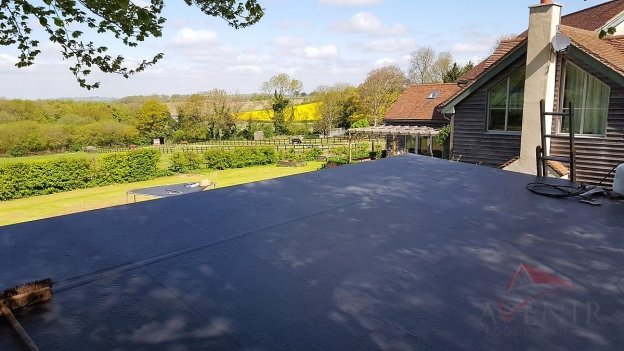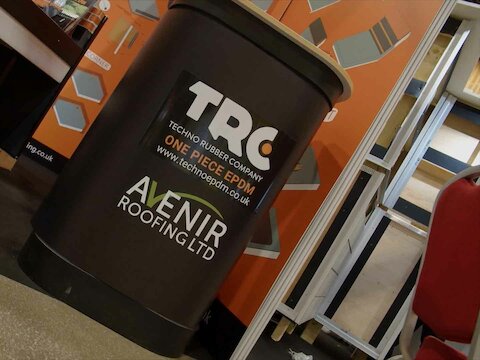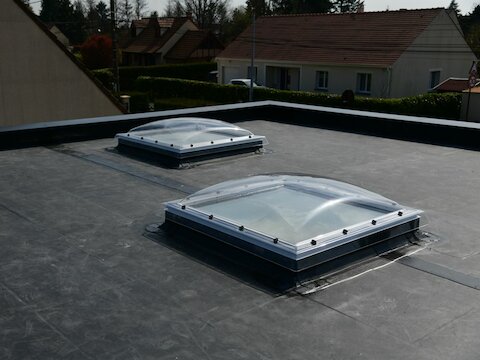5 Clear Signs That You Need a New Roof

Replacing a roof is a big decision that requires planning, determination and a great work ethic. You should research your roofing options before deciding on a final plan. This could save you time, money, and most importantly, stress. We’d be happy to speak to you regarding your plans, as it’s best to use informed decision making before rushing into the excitement that comes with the building process.
In fact, you may not even need to replace it at all, as many minor issues can be solved with efficient repairs. It’s always best to get a second opinion from an accredited professional if you can, as they may be able to assist you for a cost-effective price. There are certain signs to watch out for though, and a replacement is heavily advised if you notice any of the following.
Lifespan Expiry
As with every material, your roof has an expiry date. This depends on the material it was made with and the level of craftsmanship. Some materials have a longer lifespan than others, but sacrifice usability in other areas. The below table covers the average lifespan of many common roofing materials.
| Material | Average Lifespan |
| Asphalt | 20 – 40 Years |
| Copper Tiles | Up to 100 Years |
| Fibreglass Shingles | More than 50 Years |
| Flat Roof (Asphalt) | Around 10 Years |
| Flat Roof (Rubber or Plastic) | 40 – 50 Years |
| Steel Tiles | More than 50 Years |
| Stone Tiles (Clay) | 40 – 60 Years |
| Stones Tiles (Slate or Concrete) | 50 – 100 Years |
| Wood Shingles | Around 30 Years |
If your roof is nearing its expiry date, you might want to think about a replacement. As a balance between cost-effectiveness and functionality, we’d recommend Firestone RubberCover. We’ve pioneered EPDM for quite some time, and its lifespan of more than 50 years places it above many of its immediate competitors. It can’t be beat in terms of value for money either, and it offers resistance to UV radiation, alkaline rains and high/low temperatures. It’s a great option for your flat roof.
Water Damage
Interior and exterior water damage is usually a sign of something serious, but it may not be a problem with your roof. It could be caused by damp, poor window fittings, or a number of other problems that require a different solution. However, you should always check your roof first if you see signs of water damage. Even if the signs include tiny water marks on your walls, it could be the precursor to a greater issue.
Large-scale water damage could result in costly repairs or a complete replacement. Certain materials are more susceptible to water damage in the first place, which is why we’d recommend Firestone RubberCover. With little-to-no maintenance required during its long lifespan, this is a highly flexible option for flat roofers throughout the UK.
Light Coming Through Your Roof
While it may make for a pleasing atmospheric effect, it’s important to act fast if you notice light coming through your roof. The best time to view this is when the sun is setting, as it should be dark enough inside your property. This allows you to see the beams of light that may be coming through, no matter how small they may be. Smaller beams may require a simple repair but large or multiple beams of light could be a sign of a greater problem.
A roof replacement is usually necessary, as these holes or tears can also take on water damage. If left unchecked, both the exterior and interior parts of the roof could be damaged, so it’s always best to get a second opinion. Certain materials have a limited lifespan, and holes and tears are usually directly related to this. (It’s one of the reasons why you see lots of older properties in states of disrepair.)
A Sagging Roof
Whether you currently have a flat or pitched roof, it should be as straight as an arrow. (With a slight incline on a flat roof.) If you can see a dip or a curve, there’s a real problem. Both flat and pitched roofs suffer from this issue, and it usually relates to framing issues or roof rot. Framing issues usually occur due to rushed or bad craftsmanship. Joints may not be lapped correctly, or nails may become loose and cause the roof to dip.
Roof rot is also a major issue that requires a complete replacement if it has spread throughout the property. You may need to speak to a professional if necessary, as it can be hard to determine the extent of the repair. It’s caused by high humidity, poor ventilation or excessive moisture, so if you’re in an environment where this occurs, you may want to take extra precautions.
Mould Inside Your Loft
Often caused by over-insulation or excess humidity in your loft space, mould or mildew is an early sign that something is wrong. If it’s caught early enough, it could be a simple fix. However, it can be quite tricky to spot and spreads quickly in the right conditions. As the loft space tends to be one of the least frequently used spaces in a home, mould often goes unchecked. As a result, a roof replacement is required.
Incorrect roof construction could be another cause of mould, so as with the other issues mentioned in this article, it’s always best to get a second opinion. If you do suspect mould, or if your loft space has experienced outbreaks of mould before, it may be best to conduct regular inspections to avoid costly repairs.




